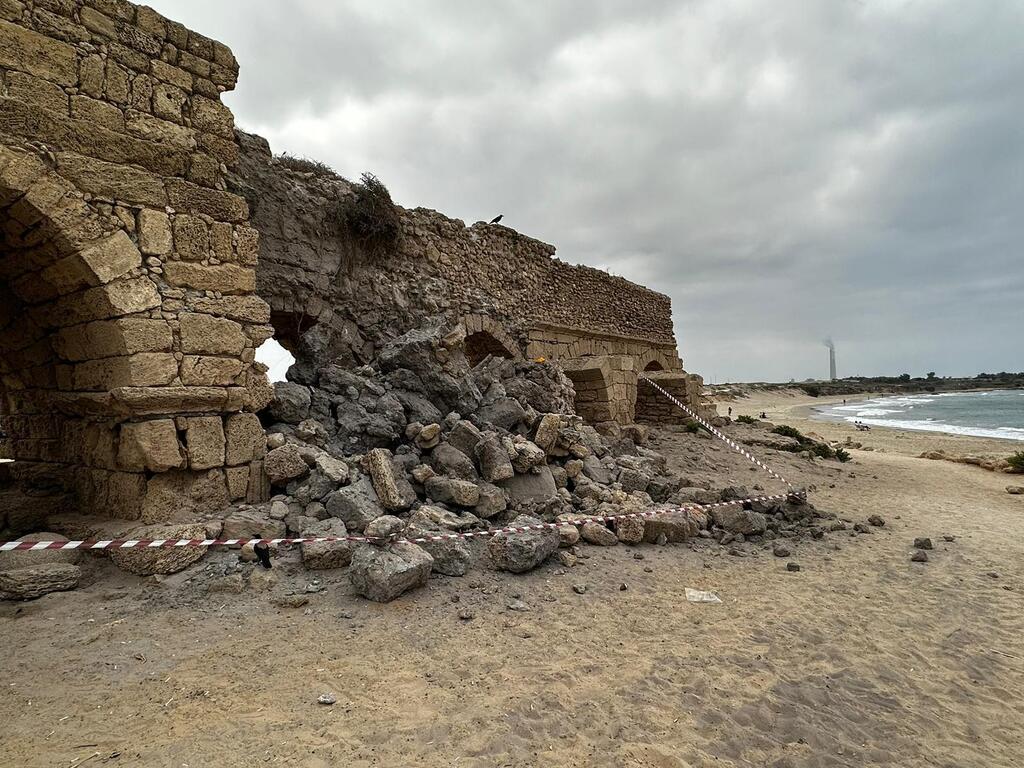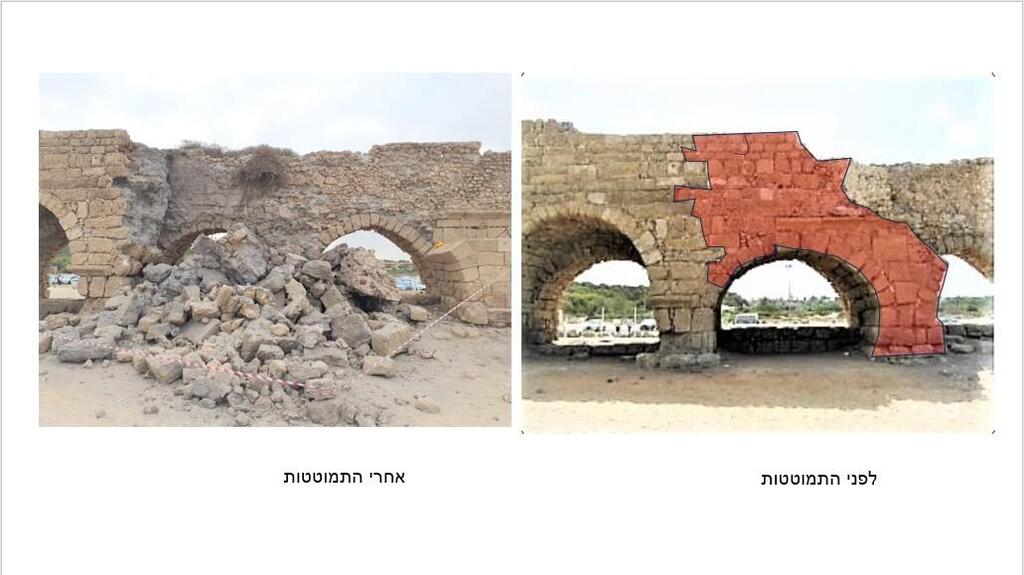Getting your Trinity Audio player ready...
The historical water arch in Caesarea suffered a collapse during the early hours of Friday. This arch stands on the Aqueduct Beach, a popular bathing spot. Representatives from the Antiquities Authority were present at the site this morning, and a team from the Antiquities Authority's Conservation Directorate is expected to evaluate the extent of the damage on Sunday. The collapsed portion of the arch, a 1,870-year-old addition built during the reign of Emperor Hadrian, faced this unfortunate fate.
Read more:
The Upper Aqueduct of Caesarea stands as a remarkable and unparalleled discovery, known for its vastness, construction quality, and intricate design. The aqueduct was ingeniously constructed on arches, forming a conduit for channeling water from the southern Carmel springs to the city of Caesarea. This water system supplied the city with its drinking water needs, as Caesarea held the role of a regional capital from the 1st to the 7th century AD. The construction of these aqueducts serves as a reflection of the shifts that occurred within Caesarea's dimensions and its evolving water supply requirements for both the city and its surrounding areas.
"Fortunately, there haven't been any fatalities here among the swimmers," remarks Eli Escusido, who leads the Antiquities Authority. "We've issued warnings, showcased documents and blueprints, emphasized the dire circumstances, and conveyed a true fear of an impending collapse. We've had multiple meetings with the landowners, and we've even suggested funding some of the repairs given the understanding that this is a looming catastrophe. I'm confident that our concerns are being taken seriously now."
According to the Antiquities Authority, there's a hazardous situation with a water aqueduct in the northern region. Ami Shahar, the head of the Conservation Department at the Antiquities Authority, further explains, "At the Antiquities Authority, we believe it's important to share with the public at this moment that the water aqueduct to Acre, spanning approximately 15 km, is in an even more precarious state and is on the brink of collapsing. The engineering condition there is critical and necessitates immediate intervention."
In the aftermath of the overnight collapse, the Antiquities Authority has called upon the regional authorities to swiftly allocate funds for the restoration of the water aqueduct and the stabilization of the remaining parts of the aqueduct that are in jeopardy.
The high aqueduct was constructed during the Roman period in two stages, in the days of Herod (4-37 CE) and during the reign of Hadrian (117-138 CE). Its beginning was a carved tunnel near the abandoned village of Sinadana. Adjacent to Shuni's theater, the aqueduct was carried on arches for about 9 kilometers until its exit.
The aqueduct consists of two adjacent aqueducts supported by arches. Above each set of arches, there is a construction containing three clay pipes that carried the water. The diameter of each pipe is 17 cm. These pipes were embedded in clay and covered with a protective layer. Near the Beit Hanania settlement, an extra 750-meter segment was connected to the aqueduct, designed with an arched structure.
The architectural style of this section sets it apart from the other parts of the aqueduct; it's constructed entirely from elongated sandstone blocks, and its design also stands out from the main aqueduct. Next to this portion, a stone with an eagle carving that protrudes is embedded within the aqueduct. This stone is adorned with a wreath and features an inscription along with the image of the victory goddess. Another stone bears an inscription that signifies the aqueduct's restoration under the efforts of Hadrian.



